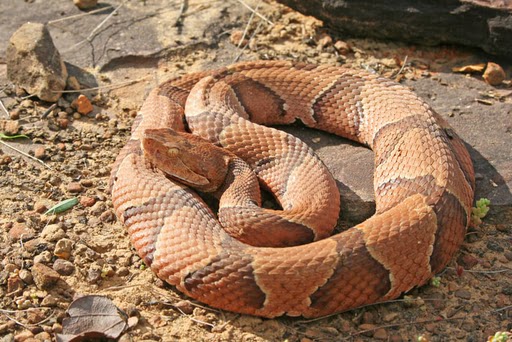Snakes consume their food whole. Sometimes, their meal consists of a small rodent, while larger snakes like pythons and boas can devour animals such as ibexes in one gulp! The key to their ability to digest such large prey lies in their stomach and metabolism.
Some individuals emphasize the importance of chewing food properly. Take Horace Fletcher, for instance. Known as ‘The Great Masticator’, Fletcher advocated for chewing food 32 times before swallowing. “Nature will punish those who do not chew” is one of his notable quotes.
However, snakes have clearly disregarded Fletcher’s advice.
In every nature documentary about snakes, there always seems to be a scene dedicated to a snake devouring its food whole. The camera closely follows each slow movement of the snake’s jaws as it engulfs its prey. For larger snakes like anacondas, boas, and pythons, the prey can be as large as a fully grown deer!
So, how do snakes, especially those that consume large prey, digest their meals whole—skin, hair, bones, and all?
Snake’s Digestive System
At first glance, snakes have many similarities to the human digestive system. The digestive system spans the entire length of a snake’s fat and elongated body, starting with the mouth or buccal cavity and extending into the stomach.
Snakes typically feast on relatively small prey, such as rodents, birds, lizards, and occasionally other snakes. When dealing with larger prey, the snake possesses a “walking jaw”. The two halves of its jaw can move independently and “walk” over the larger prey, consuming it head first. The curved fangs prevent the prey from escaping, penetrating deeper as the animal struggles to break free (if it is still alive).
The food then travels down (or through?) the esophagus to the stomach. A snake’s digestive system, like many other animals, produces acid and digestive enzymes to break down the food. The snake also has a pancreas, liver, and gall bladder that release digestive enzymes into the intestine. The nutrients are then absorbed into the bloodstream. The snake is able to digest most of the animal it eats, including the bones, and excretes the remaining hair and calcium in the form of pellets.
The champions of eating, such as boas and pythons, have a unique system that allows them to digest large prey. These snakes are ambush hunters that eat infrequently but consume larger prey. Between meals, they reduce their metabolic activity and the size of their digestive system. However, when they are ready to feed, their metabolism increases significantly, and their heart muscles and circulatory system are strengthened to aid digestion.
Once the prey enters their stomach, acid and digestive enzymes are secreted. Within a few hours, the pH of the stomach drops, breaking down the animal’s skin, flesh, bones, and all. The stomach muscles churn and blend the food, acting as a substitute for teeth. Unlike mammals that only keep food in their stomach for a short time, the snake’s stomach continues to digest the meal for several days or even weeks. The liquefied meal then moves into the intestine, where it is further broken down and the nutrients are absorbed.
Overall, the snake’s digestive system is highly efficient in breaking down and extracting nutrients from its prey.
Tradeoffs Of Consuming Large Prey
The process of digesting large prey takes several weeks and requires a significant amount of energy. The snake needs to use resources to produce and release enzymes and acid, as well as to move muscles that assist in digestion, among other metabolic considerations. Moreover, the snake increases its oxygen intake to a level comparable to that during exercise or when a racehorse is running.
In fact, pythons can utilize half of the energy derived from their large meal to actually digest it!
However, this puts the snake in a vulnerable position. At the beginning of digestion, when the snake is practically immobile due to the large bulge of food in its stomach, it becomes susceptible to attacks from other predators. If the threat becomes unavoidable, the snake may regurgitate its meal and escape, although this is detrimental to its digestive system.
Furthermore, antlers or horns from the prey may cause damage or rupture the snake’s internal organs, leading to illness or death. Attempting to consume something that is too large can even result in the snake exploding, as recorded when a python tried to devour an alligator that was simply too big.
 An Asian rock python basking in the sun. (Photo Credit: Creeping Things/Shutterstock)
An Asian rock python basking in the sun. (Photo Credit: Creeping Things/Shutterstock)
Speaking of explosions, the second drawback is putrefaction. Shortly after the snake ingests its prey, whether it is a rat or an ibex, the prey begins to decompose. The bacteria in the animal initiate decomposition, causing the animal to bloat and increase in size. If the snake has consumed something already quite large, it cannot afford for its meal to grow any further. Putrefaction also brings along a strong odor, toxic chemicals produced by bacteria, and the risk of infection. The snake’s digestive system essentially competes against the bacteria.
To prevent this, snakes can keep themselves warm. Snakes are ectothermic creatures, meaning their body temperature reflects the external temperature. Consequently, the functioning of their organs is influenced by temperature. Warmer temperatures accelerate digestion, so snakes often bask in the sun to prepare their bodies for digestion.
In colder regions, snakes like vipers and rattlesnakes utilize their highly toxic venom to digest their prey internally. The venom, which contains digestive enzymes along with its toxins, breaks down the animal from the inside. Thus, the snake does not need to expend extra energy solely on external digestion.
A Final Remark
There is one snake species that breaks its food—crabs—into smaller pieces. For instance, it tears off the crab’s legs. This action is the closest to chewing that scientists have observed in snakes. It demonstrates how much about nature we still have yet to fully comprehend!
